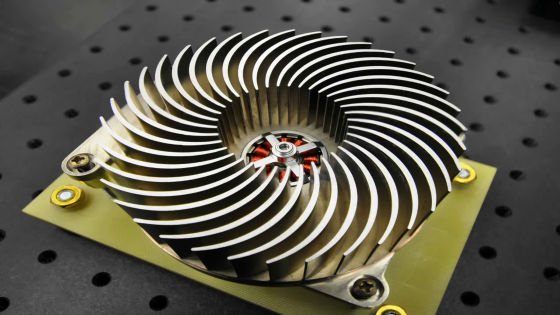Next-generation heat sink "Sandia Cooler" capable of resolving three problems of cooling efficiency, dirt, and noise at a stretch

America'sSandia National LaboratoryDeveloped the next generation type heat sink "Sandia Cooler" that overturns the common sense of heat sink so far. It was not realized by the development of new technology but it was created by Columbus' egg-like idea such as why it had not been thought until now.
Sandia National Laboratories: Licensing / Technology Transfer The Sandia Cooler
If you see a movie that is actually running, you can see what kind of silhouette it is.
Overview of the Sandia Cooler - YouTube
Traditional CPU cooling was done with a heat sink and a fan, and inevitably the noise could not be avoided. Also, as the interior of the PC gets messed up, dirt is easy to accumulate, and regular performance is not demonstrated unless regular cleaning is done.

It was thought to solve it, "Sandia Cooler".

When using it will rotate like this.

The figure with its upper left stopped. By rotating the heat sink itself, moderate cooling performance can be obtained even without a fan.

Jeff Koplow of the laboratory has a conventional type heat sink.

"Because it is rotating, I am not a heat sink but a fan," I think, but the back side is definitely a heat sink like this.

The mechanism that raises the wind to the end not to cool the CPU but heat which is transmitted through the base is exhausted to the surroundings by collecting air from above and cooling it. The upper part of the fin is around 25 degrees, the base part is around 40 degrees.

The fin design is like this. Air cooling efficiency is raised by arrangement of fins based on this.

If you use Sandia Cooler, you can make the size of parts used for cooling related to 1/10 of the previous one. According to the laboratory, this is just a pretend only Iimono, according to the research, cost, durability, complexity (trouble of care), and it can be used without problems even from a practical point of view It is.
Related Posts:







